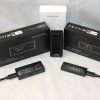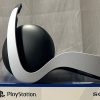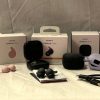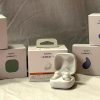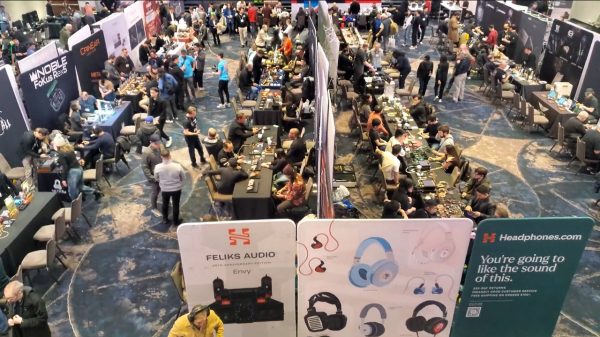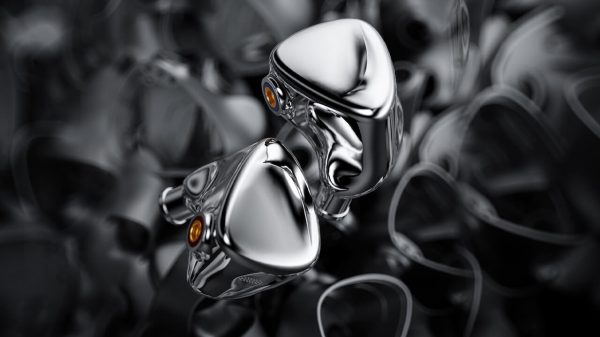The headphone category is generally dominated by some very large companies; Apple, Bose, Sony, AKG, Philips, and Sennheiser command a sizable percentage of the overall market. The high-end has delivered some global success stories like Audeze, HiFiMAN, Dan Clark Audio, Noble, Meze Audio — but they are not quite there at this point when it comes to volume or mainstream recognition.
Smaller companies like Flare Audio fill a very different need.
Flare Audio finds itself within the bespoke enthusiast category; the company was founded by Davies and Naomi Roberts who have rather deep roots in the concert sound arena. Their success up to this point has been with improving the sound quality at live music and they are now trying to utilize their technical knowledge to create better sounding products for consumers.
During that early period Flare developed and patented an anti-resonance compression technology dubbed “Space,” and a pressure releasing exhaust technology called “Vortex.”
Vortex was designed with the motion of dynamic drivers in mind. A sealed box with a dynamic driver on one side of it (most speakers) doesn’t provide the same pressure on either side of the driver so it may be easier for the driver to move forward than back.

This disparity in the movement of the diaphragm causes distortion and can be quite audible. Vortex was designed as a pressure stabilizing technology that allowed air movement to both sides of the driver to be equalized. A type of infinite baffle, without having to leave the rear of the driver exposed to the elements.
Flare got some great feedback and compliments from some big names in music such as Jimmy Page, and Flood (British post-punk and alternative music producer who has worked with everyone from U2, New Order, Depeche Mode, and Nick Cave) who were very impressed with their concert sound products.
Davies, buoyed by this success decided that if he was going to accomplish his goal of universally improving sound he had to get his concept into more sets of ears.
My first experience with Flare was with their sound attenuation products; I’ve known about Flare for years because I sleep in a set of their earplugs. Early models used a foam tip on a silicone stem with newer models now sporting aluminum or titanium options.
Sometimes, the goal isn’t to cut out all sound though, just to bring it down to manageable levels. Flare did a lot of research on how best to lower sound levels and cut out unwanted noise without eliminating the voices and things users wanted to hear and the result is a technology called Calmer.
Whether we realize it or not, noise causes stress as our brain subconsciously attempts to process and identify every sound we hear. The more sounds we are bombarded with — the more stress we feel.
In researching the design for the Calmer, Davies found that our own ears contribute to the problem. The shape of the human ear is designed to amplify certain frequencies that are important to our survival. Whether that be the growl of a wild animal or the cry of a baby, there is no denying that certain sounds cause more reaction than others when played at the same volume.
This is why a truly flat frequency response doesn’t sound flat when played for a listener. We are adding our own tuning to the sound.
A lot of manufacturers have been working at adjusting sound signatures to compensate for how the human ear shapes sound; we have things like the Harman Target and Diffuse field curves to help mitigate those resonances within the human ear.
But what if we could eliminate them?
That was the purpose behind Calmer; to direct sound to the ear drum while eliminating the chambers in the ear canal that sound normally travels through.
Calmer has been a big hit with noise sensitive people and especially those on the Autism disorder spectrum where stimulus overload is a major issue.

It is also the concept that drives Flare’s new E-Prototype in-ear monitor. The design uses wave guides to direct sound directly to the inner ear without it being subjected to the normal path of the ear canal.
This technology is what Flare has dubbed USQ or “Universal Sound Quality” as bypassing the chambers in the middle ear greatly reduces the differences in what we hear when listening to music.
Part of the reason no two reviewers (or people in general for that matter) ever describe sound the exact same way — is because we have variations in dimensions and shape of our ear canals and that causes differences in what we hear.
By removing that portion of the ear from the path, we remove those variations and now arrive at a way to hear the same thing each time regardless of who is listening. No need to tune around those resonances as they no longer happen.

The E-Prototype is a bit strange looking at first and seats a good bit deeper than average in-ears in a fashion somewhat similar to Etymotic IEMs but the offset helps make the E-Prototype a more comfortable fit than the straight-in designs.
The body of the Flare Audio E-Prototype is 3D printed on one of two machines in house at Flare and currently comes in Grey only. The cables are permanently attached and are made of a very durable Kevlar like sheathing that should last well with reasonable care.
The seating depth does mean that a solid tip attachment mechanism is needed as losing a tip at that depth is likely to require an audiologist’s intervention to remove it.
Flare Audio is aware of this of this and designed an anchoring flare on the nozzle as well as tips that fit extremely snug to make sure that if installed properly, tip loss will not be an issue.
Tip: Because of the seating depth you’ll likely use a smaller than average tip so start small and only work up until you get a good seal. For me, the smallest tip option gives the best combination of seal and comfort.
Internally, a single 10mm dynamic driver that Davies refers to as “off the shelf” is used with a nominal impedance of 37 ohms in my testing with a sensitivity of roughly 101dB/mW. The frequency response curves don’t resemble anything one would expect so I am not going to publish one as it would just serve to confuse.
Sound
The Flare Audio E-Prototype is just slightly bass forward with good sub-bass impact and extension; there is some roll-off only evident in the lower 20Hz range.
As we move into the mid-bass, what stands out the most is the quality of the texture and tonality. There is no thickening of the notes and everything is clearly defined and detailed. If you enjoy the acoustic bass, electric bass, and instruments in this range — the Flare E-Prototype is very accomplished.
String bass is particularly fun to listen to on pieces like Bottesini’s “Concerto for Double Bass No 2 in B Minor”, or Domenico Dragonetti’s “Double-Bass Concerto in A Major” both of which show off the E-Prototypes bass texture and speed.
The midrange is well rendered with vocals cutting through the instrumentation but not pushed too far forward in front of it. Switching over to classic rock, one immediately hears what the E-Prototype can do in lower midrange with a very crisp level of attack and growl with guitars. John Lee Hooker and ZZ Top had both excellent timbre, note weight, and separation with the soundstage.
The treble is clean and detailed as well, without a lot of forward push but with enough energy to give percussion good attack with plenty of resolution and bite.

Conclusion
The overall performance is very good for an “off the shelf” 10mm dynamic with good timbre and texture throughout. The detail retrieval is quite good as well but not quite what you would find in a flagship.
We have to remember that the E-Prototype is a proof of concept and at $342, not something that we can expect it to compete with the kilo-buck flagships on an even footing.
I think it is well worth a listen, but don’t take my word for it. Flare Audio is offering a rather generous 100-day money back guarantee; I think that speaks volumes to how they operate and want you to be happy.
For more information: https://www.flareaudio.com/products/e-prototype


